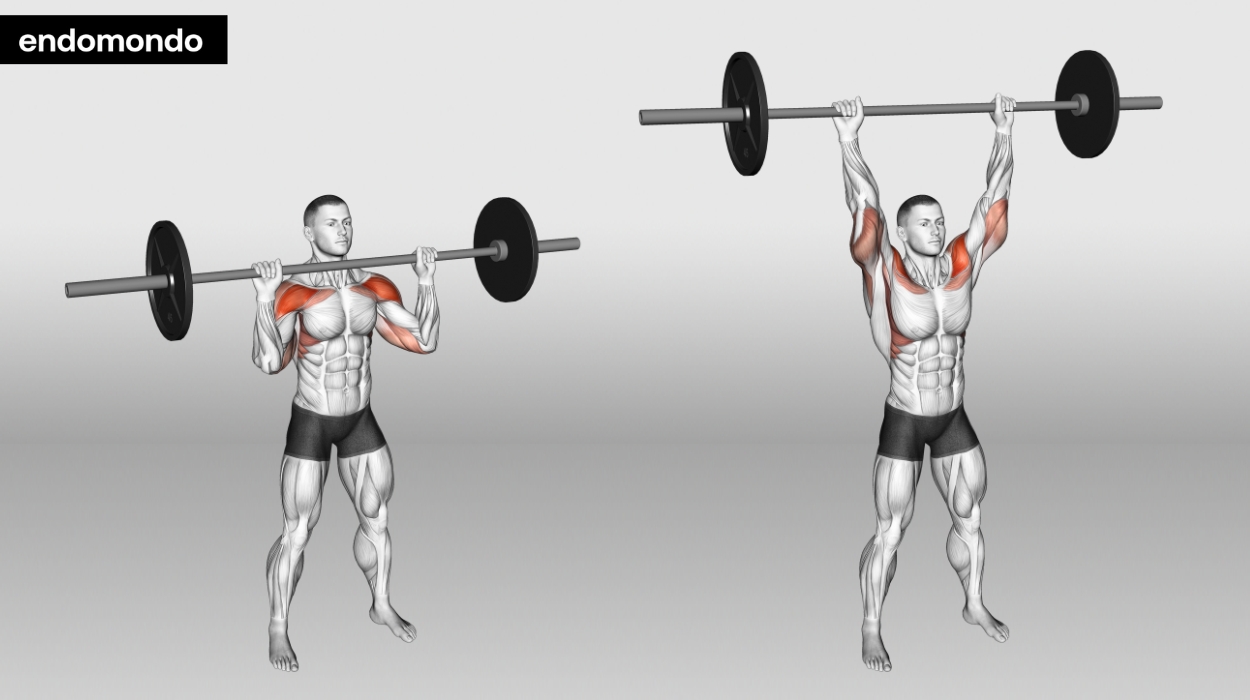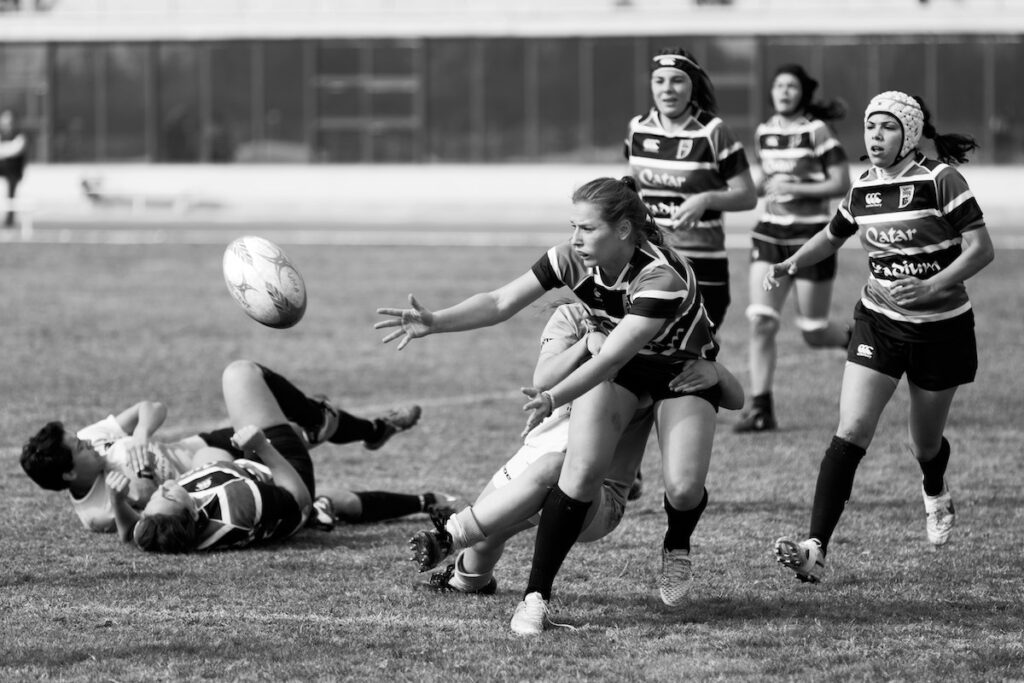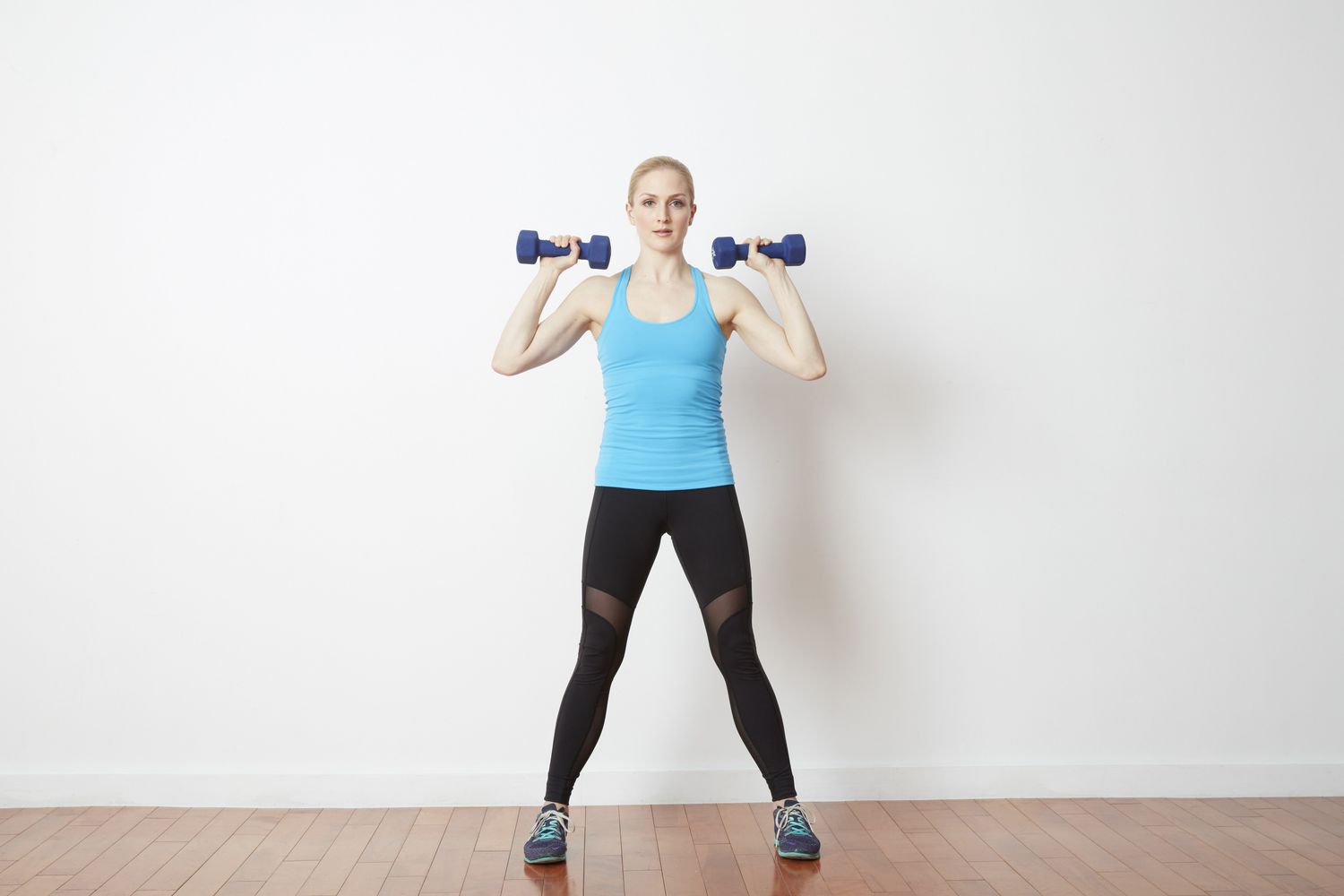Introduction
Welcome to the world of strength training, where power and precision meet to enhance your performance on the rugby field. One key exercise that can significantly contribute to your strength and agility is the Overhead Press. In this article, we’ll explore how this exercise can benefit female athletes aged 14 to 21, helping you unleash your full potential on the pitch.
What Muscles Do They Target?
The Overhead Press primarily targets the muscles of the upper body, particularly the shoulders, triceps, and upper back. As you push the weight overhead, your deltoids, trapezius, and triceps engage to stabilize and lift the load. Additionally, the core muscles play a crucial role in maintaining stability throughout the movement, making it a comprehensive exercise for overall strength development.

What Are the Outcomes?
Engaging in regular Overhead Press workouts can lead to a multitude of positive outcomes for rugby players. These include:
- Increased Upper Body Strength: By consistently challenging your shoulders and triceps with overhead pressing movements, you’ll build muscle mass and strength, enabling you to tackle opponents more effectively and maintain possession of the ball.
- Improved Shoulder Stability: Rugby involves dynamic movements that put stress on the shoulders. The Overhead Press helps strengthen the muscles surrounding the shoulder joint, reducing the risk of injury and enhancing your ability to perform overhead tasks on the field.
- Enhanced Explosive Power: Explosiveness is crucial in rugby, whether you’re sprinting towards the try line or driving through tackles. The Overhead Press trains fast-twitch muscle fibers, allowing you to generate explosive power in your upper body movements.
- Better Posture and Alignment: Proper execution of the Overhead Press requires maintaining a strong, upright posture. As you develop strength in your shoulders and upper back, you’ll naturally improve your posture both on and off the field, reducing the risk of injuries related to poor alignment.
How Do They Benefit Rugby Players?
For rugby players, the benefits of incorporating the Overhead Press into your training regimen are manifold:
- Increased Tackling Power: A strong upper body is essential for executing powerful tackles. By strengthening your shoulders and triceps with the Overhead Press, you’ll be better equipped to halt opposing players in their tracks and win possession of the ball.
- Improved Lineout Performance: In rugby, lineouts require players to lift teammates into the air to secure possession of the ball. The Overhead Press enhances shoulder stability and pressing strength, making you a more reliable lifter during lineout situations.
- Enhanced Ball Handling Skills: Whether passing, catching, or carrying the ball, strong shoulders and triceps are essential for maintaining control and accuracy. Incorporating the Overhead Press into your training routine can improve your ability to execute these skills under pressure.
- Reduced Risk of Injury: Rugby is a physically demanding sport that places significant strain on the body, particularly the shoulders and upper back. By strengthening these areas through the Overhead Press, you’ll minimize the risk of common rugby-related injuries, such as shoulder dislocations and rotator cuff tears.

How to Perform the Exercise Correctly
To reap the full benefits of the Overhead Press and minimize the risk of injury, it’s essential to perform the exercise with proper form. Follow these steps:
- Set Up: Stand with your feet shoulder-width apart, gripping the barbell with an overhand grip slightly wider than shoulder-width.
- Positioning: Lift the barbell to shoulder height, keeping your elbows bent and the bar resting on the front of your shoulders. Brace your core and maintain a slight bend in your knees throughout the movement.
- Execution: Press the barbell overhead in a smooth, controlled motion, extending your arms fully without locking out your elbows. Keep your core engaged and avoid overarching your lower back.
- Lowering: Slowly lower the barbell back to the starting position, maintaining control and stability throughout the movement. Avoid letting the weight drop or bouncing it off your shoulders.
Variations of the Exercise
To keep your workouts challenging and prevent plateaus, consider incorporating variations of the Overhead Press into your routine:
- Dumbbell Overhead Press: Perform the same pressing motion using dumbbells instead of a barbell, allowing for greater range of motion and unilateral strength development.
- Push Press: Incorporate leg drive by bending your knees and explosively driving the weight overhead, utilizing momentum to lift heavier loads.
- Seated Overhead Press: Sit on a bench with back support and press the weight overhead, focusing on isolating the shoulders without engaging the lower body for assistance.
Integrating the Exercise into Your Routine
To maximize the benefits of the Overhead Press, incorporate it into your weekly training schedule as follows:
- Frequency: Aim to perform the Overhead Press 1-2 times per week, allowing for adequate rest and recovery between sessions.
- Sets and Reps: Start with 3-4 sets of 6-8 repetitions, focusing on maintaining proper form and gradually increasing the weight as you progress.
- Progressive Overload: Continuously challenge yourself by gradually increasing the weight lifted or the number of repetitions performed over time.
Safety Tips and Common Mistakes
To ensure your safety and effectiveness while performing the Overhead Press, keep the following tips in mind:
- Start Light: Begin with a conservative weight to master proper form before progressing to heavier loads.
- Engage Your Core: Keep your core muscles tight throughout the movement to stabilize your spine and prevent lower back injuries.
- Avoid Excessive Arching: Maintain a neutral spine position and avoid leaning back excessively as you press the weight overhead.
- Listen to Your Body: If you experience any pain or discomfort during the exercise, stop immediately and reassess your form or consult a fitness professional.
Complementary Exercises
To further enhance your strength and performance on the rugby field, consider incorporating the following complementary exercises into your training routine:
- Pull-Ups: Strengthen your back and improve pulling strength, essential for tackling and ball carrying.
- Deadlifts: Develop lower body strength and power, enhancing your ability to drive through tackles and scrums.
- Plank Variations: Strengthen your core muscles to improve stability and prevent injuries during dynamic movements on the field.
Alternative Exercises
If you’re unable to perform the Overhead Press due to equipment limitations or injury concerns, consider alternative exercises that target similar muscle groups:
- Arnold Press: A variation of the Overhead Press that involves rotating the palms during the pressing motion, targeting the shoulders from different angles.
- Lateral Raises: Isolate the deltoid muscles by lifting dumbbells or resistance bands laterally from your sides to shoulder height.
- Military Press: Similar to the Overhead Press but performed with a narrower grip, emphasizing the triceps and anterior deltoids.
By incorporating the Overhead Press and its variations into your training routine, along with complementary exercises to strengthen key muscle groups, you’ll be well on your way to dominating the rugby field with power, precision, and confidence. Stay focused, stay determined, and let your strength shine on game day!

